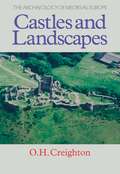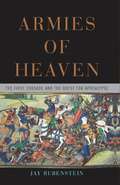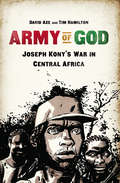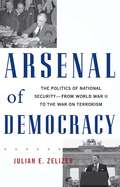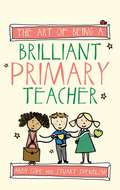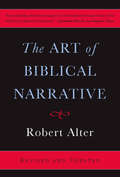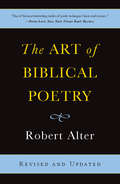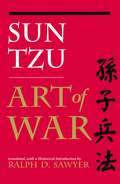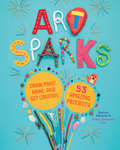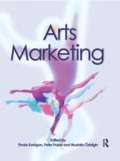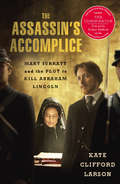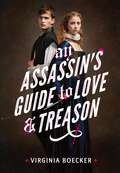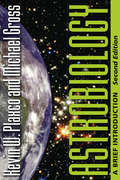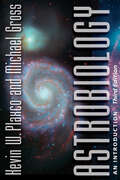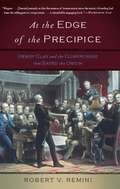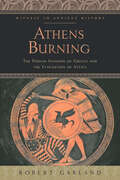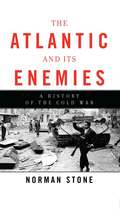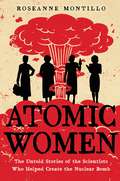- Table View
- List View
The Archaeology of Medieval Europe: Castles and Landscapes
by O. H. CreightonCastles were among the most dominant features of the medieval landscape, and many remain impressive structures to the present day. This work looks at castles in a new light, using the theories and methods of landscape studies. Castles are examined not as an isolated phenomenon, but in relation to their surrounding human as well as physical areas. Taking a thematic approach, the study examines a broad range of evidence, archaeological, documentary and topographical, to assess the contribution of these structures on the evolution of the medieval landscape. The imprint of castles on the human landscape was powerful and often long-lived. As imposing icons of status and lordship, castles re-shaped the landscape in the minds of contemporaries, while as estate centres and manors they were closely connected with their surrounding hinterlands. The settlement landscape was also deeply affected by castle building as their powerful aristocratic owners fostered new towns and villages, while other communities were disrupted by their construction. The types of sites chosen for castles are also examined, as are the features that often accompanied them, including churches, mills, monasteries, deer parks, fishponds and gardens. Throughout, this book challenges many of our perceptions about medieval castles and presents some new avenues for future research. Alternative ISBNs 9781904768678
The Archaeology of Medieval Europe: Castles and Landscapes (PDF)
by O. H. CreightonCastles were among the most dominant features of the medieval landscape, and many remain impressive structures to the present day. This work looks at castles in a new light, using the theories and methods of landscape studies. Castles are examined not as an isolated phenomenon, but in relation to their surrounding human as well as physical areas. Taking a thematic approach, the study examines a broad range of evidence, archaeological, documentary and topographical, to assess the contribution of these structures on the evolution of the medieval landscape. The imprint of castles on the human landscape was powerful and often long-lived. As imposing icons of status and lordship, castles re-shaped the landscape in the minds of contemporaries, while as estate centres and manors they were closely connected with their surrounding hinterlands. The settlement landscape was also deeply affected by castle building as their powerful aristocratic owners fostered new towns and villages, while other communities were disrupted by their construction. The types of sites chosen for castles are also examined, as are the features that often accompanied them, including churches, mills, monasteries, deer parks, fishponds and gardens. Throughout, this book challenges many of our perceptions about medieval castles and presents some new avenues for future research. Alternative ISBN 9781904768678
Armies of Heaven: The First Crusade and the Quest for Apocalypse
by Jay RubensteinAt Moson, the river Danube ran red with blood. At Antioch, the Crusaders- their saddles freshly decorated with sawed-off heads-indiscriminately clogged the streets with the bodies of eastern Christians and Turks. At Ma'arra, they cooked children on spits and ate them. By the time the Crusaders reached Jerusalem, their quest-and their violence- had become distinctly otherworldly: blood literally ran shin-deep through the streets as the Crusaders overran the sacred city. Beginning in 1095 and culminating four bloody years later, the First Crusade represented a new kind of warfare: holy, unrestrained, and apocalyptic. In Armies of Heaven, medieval historian Jay Rubenstein tells the story of this cataclysmic event through the eyes of those who witnessed it, emphasizing the fundamental role that apocalyptic thought played in motivating the Crusaders. A thrilling work of military and religious history, Armies of Heaven will revolutionize our understanding of the Crusades.
Army of God: Joseph Kony's War in Central Africa
by David Axe Tim HamiltonJoseph Kony is the most dangerous guerilla leader in modern African history.It started with a visit from spirits. In 1991, Kony claimed that spiritual beings had come to him with instructions: he was to lead his group of rebels, the Lord's Resistance Army, in a series of brutal raids against ordinary Ugandan civilians. Decades later, Kony has sown chaos throughout Central Africa, kidnapping and terrorizing countless innocents—especially children. Yet despite an enormous global outcry, the Kony 2012 movement, and an international military intervention, the carnage has continued. Drawn from on-the-ground reporting by war correspondent David Axe and starkly illustrated by Tim Hamilton, Army of God is the first-ever graphic account of the global phenomenon surrounding Kony—from the devastation he has left behind to the long campaign to defeat him for good.
Arsenal of Democracy: The Politics of National Security--From World War II to the War on Terrorism
by Julian E. ZelizerIt has long been a truism that prior to George W. Bush, politics stopped at the water&’s edge—that is, that partisanship had no place in national security. In Arsenal of Democracy, historian Julian E. Zelizer shows this to be demonstrably false: partisan fighting has always shaped American foreign policy and the issue of national security has always been part of our domestic conflicts. Based on original archival findings, Arsenal of Democracy offers new insights into nearly every major national security issue since the beginning of the cold war: from FDR&’s masterful management of World War II to the partisanship that scarred John F. Kennedy during the Cuban Missile Crisis, from Ronald Reagan&’s fight against Communism to George W. Bush&’s controversial War on Terror. A definitive account of the complex interaction between domestic politics and foreign affairs over the last six decades, Arsenal of Democracy is essential reading for anyone interested in the politics of national security.
The Art Of Being A Brilliant Primary Teacher (PDF)
by Andy Cope Stuart SpendlowOn a good day, being a primary school teacher is the best job in the world. However, in the interests of grounding The Art of Being a Brilliant Primary Teacher in pure realism, Andy Cope and Stuart Spendlow readily acknowledge that it can also be the worst. The purpose of this book is to help you have more amazing days by inspiring and challenging you to be the best version of you because, at your best, you're flippin' awesome! Andy and Stuart use their experience, studies and 'what if?' moments combined with their 'don't judge us' attempt at humour to bring you a fun, slightly provocative, thoughtful and motivational read. This book isn't riddled with lectures and theories from old professors of centuries ago. It while it may be true that teaching was easier in the 'good old days' we reckon those days are long gone so our focus is on the here and now of teaching. These new days require some refined thinking and this book is simply designed to help you to be a brilliant primary school teacher whatever the weather (including wet playtime). Embrace the power of positive psychology, lift your happiness levels, discover tips and tricks to enhance your practice and get ready for some seriously brilliant primary teaching with this innovative, practical and positive guide. Andy and Stuart tell it like it is, without preaching. This is their light--hearted, thought--provoking take on modern primary teaching. For all primary teachers - from newly qualified teachers to senior leadership team members - who want to become, quite simply, brilliant.
The Art of Biblical Narrative
by Robert AlterFrom celebrated translator of the Hebrew Bible Robert Alter, the classic study of the Bible as literature, a winner of the National Jewish Book AwardRenowned critic and translator Robert Alter's The Art of Biblical Narrative has radically expanded our view of the Bible by recasting it as a work of literary art deserving studied criticism. In this seminal work, Alter describes how the Hebrew Bible's many authors used innovative literary styles and devices such as parallelism, contrastive dialogue, and narrative tempo to tell one of the most revolutionary stories of all time: the revelation of a single God. In so doing, Alter shows, these writers reshaped not only history, but also the art of storytelling itself.
The Art of Biblical Poetry
by Robert AlterThree decades ago, renowned literary expert Robert Alter radically expanded the horizons of biblical scholarship by recasting the Bible as not only a human creation but a work of literary art deserving studied criticism. In The Art of Biblical Poetry, his companion to the seminal The Art of Biblical Narrative, Alter takes his analysis beyond narrative craft to investigate the use of Hebrew poetry in the Bible. Updated with a new preface, myriad revisions, and passages from Alter's own critically acclaimed biblical translations, The Art of Biblical Poetry is an indispensable tool for understanding the Bible and its poetry.
The Art of War: Sun Tzu's Classic In Plain English With Sun Pin's The Art Of Warfare (Penguin Modern Classics Ser. #909)
by Tzu SunThe definitive translation of Sun-tzu's timeless classic of military strategy, Art of WarArt of War is almost certainly the most famous study of strategy ever written and has had an extraordinary influence on the history of warfare. The principles Sun-tzu expounded were utilized brilliantly by such great Asian war leaders as Mao Tse-tung, Giap, and Yamamoto. First translated two hundred years ago by a French missionary, Sun-tzu's Art of War has been credited with influencing Napoleon, the German General Staff, and even the planning for Desert Storm. Many Japanese companies make this book required reading for their key executives. And increasingly, Western businesspeople and others are turning to the Art of War for inspiration and advice on how to succeed in competitive situations of all kinds. Unlike most editions of Sun-tzu currently available (many simply retreads of older, flawed translations), this superb translation makes use of the best available classical Chinese manuscripts, including the ancient "tomb text" version discovered by archaeologists at Linyi, China. Ralph Sawyer, an outstanding Western scholar of ancient Chinese warfare and a successful businessman in his own right, places this classic work of strategy in its proper historical context. Sawyer supplies a portrait of Sun-tzu's era and outlines several battles of the period that may have either influenced Sun-tzu or been conducted by him. While appreciative of the philosophical richness of the Art of War, this edition stresses Sun-tzu's practical origins and presents a translation that is both accurate and accessible.
Art Sparks: Draw, Paint, Make, and Get Creative with 53 Amazing Projects!
by Marion Abrams Hilary Emerson LayThis lively, colorful compendium of arts and crafts for a new generation of kids features projects specially designed to spark creativity, invite self-expression, and nurture self-confidence. From finger puppets to fabric flags to shrink art, each activity uses inexpensive materials and can be crafted in less than 90 minutes.
Arts Marketing (PDF)
by Finola Kerrigan Peter Fraser Mustafa ÖzbilginArts Marketing focuses on a variety of sectors within the arts and addresses the way in which marketing principles are applied within these, outlining both the similarities and the differences that occur. Relating policy to practice, this contributed text demonstrates the most effective means of marketing in specific areas of the arts, with each chapter having been written by a specialist in the field. Although primarily focusing on the UK market, the subject has global relevance and appeal, and policy is evaluated on national, European and supranational levels. Specialist topics dealt with range from the marketing of the theatre, opera, and museums, through to the film industry and popular music. Arts Marketing focuses on a variety of sectors within the arts and addresses the way in which marketing principles are applied within these, outlining both the similarities and the differences that occur. Relating policy to practice, this contributed text demonstrates the most effective means of marketing in specific areas of the arts, with each chapter having been written by a specialist in the field. Although primarily focusing on the UK market, the subject has global relevance and appeal, and policy is evaluated on national, European and supranational levels. Specialist topics dealt with range from the marketing of the theatre, opera, and museums, through to the film industry and popular music.
The Assassin's Accomplice: Mary Surratt and the Plot to Kill Abraham Lincoln
by Kate Clifford LarsonIn The Assassin's Accomplice, historian Kate Clifford Larson tells the gripping story of Mary Surratt, a little-known participant in the plot to kill Abraham Lincoln, and the first woman ever to be executed by the federal government of the United States. Surratt, a Confederate sympathizer, ran the boarding house in Washington where the conspirators-including her rebel son, John Surratt-met to plan the assassination. When a military tribunal convicted her for her crimes and sentenced her to death, five of the nine commissioners petitioned President Andrew Johnson to show mercy on Surratt because of her sex and age. Unmoved, Johnson refused-Surratt, he said, "kept the nest that hatched the egg.” Set against the backdrop of the Civil War, The Assassin's Accomplice tells the intricate story of the Lincoln conspiracy through the eyes of its only female participant. Based on long-lost interviews, confessions, and court testimony, the text explores how Mary's actions defied nineteenth-century norms of femininity, piety, and motherhood, leaving her vulnerable to deadly punishment historically reserved for men. A riveting narrative account of sex, espionage, and murder cloaked in the enchantments of Southern womanhood, The Assassin's Accomplice offers a fresh perspective on America's most famous murder.
The Assassin's Accomplice: Mary Surratt and the Plot to Kill Abraham Lincoln
by Kate Clifford LarsonIn The Assassin's Accomplice, historian Kate Clifford Larson tells the gripping story of Mary Surratt, a little-known participant in the plot to kill Abraham Lincoln, and the first woman ever to be executed by the federal government of the United States. Surratt, a Confederate sympathizer, ran the boarding house in Washington where the conspirators-including her rebel son, John Surratt-met to plan the assassination. When a military tribunal convicted her for her crimes and sentenced her to death, five of the nine commissioners petitioned President Andrew Johnson to show mercy on Surratt because of her sex and age. Unmoved, Johnson refused-Surratt, he said, "kept the nest that hatched the egg." Set against the backdrop of the Civil War, The Assassin's Accomplice tells the intricate story of the Lincoln conspiracy through the eyes of its only female participant. Based on long-lost interviews, confessions, and court testimony, the text explores how Mary's actions defied nineteenth-century norms of femininity, piety, and motherhood, leaving her vulnerable to deadly punishment historically reserved for men. A riveting narrative account of sex, espionage, and murder cloaked in the enchantments of Southern womanhood, The Assassin's Accomplice offers a fresh perspective on America's most famous murder.
An Assassin's Guide to Love and Treason
by Virginia BoeckerShakespeare in Love meets Mr. and Mrs. Smith in this witty and thrilling story of star-crossed assassins in Elizabeth England, perfect for fans of My Lady Jane and TheGentleman's Guide to Vice and Virtue! When Lady Katherine's father is killed for being an illegally practicing Catholic, she discovers treason wasn't the only secret he's been hiding: he was also involved in a murder plot against the reigning Queen Elizabeth I. With nothing left to lose, Katherine disguises herself as a boy and travels to London to fulfill her father's mission, and to take it one step further -- kill the queen herself. Katherine's opportunity comes in the form of William Shakespeare's newest play, which is to be performed in front of Her Majesty. But what she doesn't know is that the play is not just a play. It's a plot to root out insurrectionists and destroy the rebellion once and for all. The mastermind behind this ruse is Toby Ellis, a young spy for the queen with secrets of his own. When Toby and Katherine are cast opposite each other as the play's leads, they find themselves inexplicably drawn to one another. But the closer they grow, the more precarious their positions become. And soon they learn that star-crossed love, mistaken identity, and betrayal are far more dangerous off the stage than on.
Astrobiology: A Brief Introduction
by Michael Gross Kevin W. PlaxcoInformed by new planetary discoveries and the findings from recent robotic missions to Mars, Jupiter, and Saturn, scientists are rapidly replacing centuries of speculation about potential extraterrestrial habitats with real knowledge about the possibility of life outside our own biosphere—if it exists, and where. This second edition of Kevin W. Plaxco and Michael Gross’s widely acclaimed text incorporates the latest research in astrobiology to bring readers the most comprehensive, up-to-date, and engaging introduction to the field available.Plaxco and Gross expand their examination of the origin of chemical elements, the developments that made the Universe habitable, and how life continues to be sustained. They discuss in great detail the formation of the first galaxies and stars, the diverse chemistry of the primordial planet, the origins of metabolism, the evolution of complex organisms, and the feedback regulation of Earth's climate. They also explore life in extreme habitats, potential extraterrestrial habitats, and the current status of the search for extraterrestrial life.Weaving together the relevant threads of astronomy, geology, chemistry, biophysics, and microbiology, this broadly accessible introductory text captures the excitement, controversy, and progress of the dynamic young field of astrobiology. New to this edition is a glossary of terms and an epilogue recapping the key unanswered questions, making Astrobiology an ideal primer for students and, indeed, for anyone curious about life and the Universe.
Astrobiology: A Brief Introduction
by Kevin W. Plaxco Michael GrossInformed by new planetary discoveries and the findings from recent robotic missions to Mars, Jupiter, and Saturn, scientists are rapidly replacing centuries of speculation about potential extraterrestrial habitats with real knowledge about the possibility of life outside our own biosphere—if it exists, and where. This second edition of Kevin W. Plaxco and Michael Gross’s widely acclaimed text incorporates the latest research in astrobiology to bring readers the most comprehensive, up-to-date, and engaging introduction to the field available.Plaxco and Gross expand their examination of the origin of chemical elements, the developments that made the Universe habitable, and how life continues to be sustained. They discuss in great detail the formation of the first galaxies and stars, the diverse chemistry of the primordial planet, the origins of metabolism, the evolution of complex organisms, and the feedback regulation of Earth's climate. They also explore life in extreme habitats, potential extraterrestrial habitats, and the current status of the search for extraterrestrial life.Weaving together the relevant threads of astronomy, geology, chemistry, biophysics, and microbiology, this broadly accessible introductory text captures the excitement, controversy, and progress of the dynamic young field of astrobiology. New to this edition is a glossary of terms and an epilogue recapping the key unanswered questions, making Astrobiology an ideal primer for students and, indeed, for anyone curious about life and the Universe.
Astrobiology: An Introduction
by Kevin W. Plaxco Michael GrossExploring the potential for extraterrestrial life and the origins of our own planet, this comprehensive introduction to astrobiology is updated with the latest findings.Informed by the discoveries and analyses of extrasolar planets and the findings from recent robotic missions across the solar system, scientists are rapidly replacing centuries of speculation about potential extraterrestrial habitats with real knowledge about the possibility of life outside our own biosphere—if it exists, and, if so, where. Casting new light on the biggest questions there are—how did we get here, and who else might be out there?—this third edition of Kevin W. Plaxco and Michael Gross's widely acclaimed Astrobiology incorporates a decade's worth of new developments in space to bring readers the most comprehensive, up-to-date, and engaging introduction to the field available.Plaxco and Gross examine the factors that make our Universe habitable, from the origin of chemical elements and the formation of the first galaxies and stars to the birth and composition of the planets. They describe the latest thinking about the origins of life, explain the evolution of metabolism and the development of complex organisms. In order to assess the limits for life elsewhere, they also explore life in extreme habitats and reveal how it informs the search for potential extraterrestrial habitats—ones that might support extraterrestrial life. New and updated illustrations enhance the book throughout.Sharing fascinating findings from the comet mission Dawn, the visit of New Horizons to Pluto, and the work of the Deep Carbon Observatory, which has revealed an incredible underground biosphere within our own planet, Plaxco and Gross weave together cosmology, astrophysics, geology, biochemistry, biophysics, and microbiology. From neutron star mergers to the survival skills of tardigrades, this fascinating book is an ideal primer for students or anyone curious about life and the Universe.
Astrobiology: An Introduction
by Kevin W. Plaxco Michael GrossExploring the potential for extraterrestrial life and the origins of our own planet, this comprehensive introduction to astrobiology is updated with the latest findings.Informed by the discoveries and analyses of extrasolar planets and the findings from recent robotic missions across the solar system, scientists are rapidly replacing centuries of speculation about potential extraterrestrial habitats with real knowledge about the possibility of life outside our own biosphere—if it exists, and, if so, where. Casting new light on the biggest questions there are—how did we get here, and who else might be out there?—this third edition of Kevin W. Plaxco and Michael Gross's widely acclaimed Astrobiology incorporates a decade's worth of new developments in space to bring readers the most comprehensive, up-to-date, and engaging introduction to the field available.Plaxco and Gross examine the factors that make our Universe habitable, from the origin of chemical elements and the formation of the first galaxies and stars to the birth and composition of the planets. They describe the latest thinking about the origins of life, explain the evolution of metabolism and the development of complex organisms. In order to assess the limits for life elsewhere, they also explore life in extreme habitats and reveal how it informs the search for potential extraterrestrial habitats—ones that might support extraterrestrial life. New and updated illustrations enhance the book throughout.Sharing fascinating findings from the comet mission Dawn, the visit of New Horizons to Pluto, and the work of the Deep Carbon Observatory, which has revealed an incredible underground biosphere within our own planet, Plaxco and Gross weave together cosmology, astrophysics, geology, biochemistry, biophysics, and microbiology. From neutron star mergers to the survival skills of tardigrades, this fascinating book is an ideal primer for students or anyone curious about life and the Universe.
At the Edge of the Precipice: Henry Clay and the Compromise That Saved the Union
by Robert V. ReminiIn 1850, America hovered on the brink of disunion. Tensions between slave-holders and abolitionists mounted, as the debate over slavery grew rancorous. An influx of new territory prompted Northern politicians to demand that new states remain free; in response, Southerners baldly threatened to secede from the Union. Only Henry Clay could keep the nation together.At the Edge of the Precipice is historian Robert V. Remini's fascinating recounting of the Compromise of 1850, a titanic act of political will that only a skillful statesman like Clay could broker. Although the Compromise would collapse ten years later, plunging the nation into civil war, Clay's victory in 1850 ultimately saved the Union by giving the North an extra decade to industrialize and prepare. A masterful narrative by an eminent historian, At the Edge of the Precipice also offers a timely reminder of the importance of bipartisanship in a bellicose age.
At the Edge of the Precipice: Henry Clay and the Compromise That Saved the Union
by Robert V. ReminiIn 1850, America hovered on the brink of disunion. Tensions between slave-holders and abolitionists mounted, as the debate over slavery grew rancorous. An influx of new territory prompted Northern politicians to demand that new states remain free; in response, Southerners baldly threatened to secede from the Union. Only Henry Clay could keep the nation together.At the Edge of the Precipice is historian Robert V. Remini's fascinating recounting of the Compromise of 1850, a titanic act of political will that only a skillful statesman like Clay could broker. Although the Compromise would collapse ten years later, plunging the nation into civil war, Clay's victory in 1850 ultimately saved the Union by giving the North an extra decade to industrialize and prepare. A masterful narrative by an eminent historian, At the Edge of the Precipice also offers a timely reminder of the importance of bipartisanship in a bellicose age.
At the Mountains of Madness (PDF)
by H. P. LovecraftPresents a collection of horror stories, combining scientific knowledge with an imaginative perception of the human mind.
Athens Burning: The Persian Invasion of Greece and the Evacuation of Attica (Witness to Ancient History)
by Robert GarlandBetween June 480 and August 479 BC, tens of thousands of Athenians evacuated, following King Xerxes;€™ victory at the Battle of Thermopylae. Abandoning their homes and ancestral tombs in the wake of the invading Persian army, they sought refuge abroad. Women and children were sent to one safe haven, the elderly to another, while all men of military age were conscripted into the fleet. During this difficult year of exile, the city of Athens was set on fire not once, but twice. In Athens Burning, Robert Garland explores the reasons behind the decision to abandon Attica, the peninsular region of Greece that includes Athens, while analyzing the consequences, both material and psychological, of the resulting invasion.Garland introduces readers to the contextual background of the Greco-Persian wars, which include the famous Battle of Marathon. He describes the various stages of the invasion from both the Persian and Greek point of view and explores the siege of the Acropolis, the defeat of the Persians first by the allied Greek navy and later by the army, and, finally, the return of the Athenians to their land.Taking its inspiration from the sufferings of civilians, Athens Burning also works to dispel the image of the Persians as ruthless barbarians. Addressing questions that are largely ignored in other accounts of the conflict, including how the evacuation was organized and what kind of facilities were available to the refugees along the way, Garland demonstrates the relevance of ancient history to the contemporary world. This compelling story is especially resonant in a time when the news is filled with the suffering of nearly 5 million people driven by civil war from their homes in Syria. Aimed at students and scholars of ancient history, this highly accessible book will also fascinate anyone interested in the burgeoning fields of refugee and diaspora studies.
Athens Burning: The Persian Invasion of Greece and the Evacuation of Attica (Witness to Ancient History)
by Robert GarlandBetween June 480 and August 479 BC, tens of thousands of Athenians evacuated, following King Xerxes;€™ victory at the Battle of Thermopylae. Abandoning their homes and ancestral tombs in the wake of the invading Persian army, they sought refuge abroad. Women and children were sent to one safe haven, the elderly to another, while all men of military age were conscripted into the fleet. During this difficult year of exile, the city of Athens was set on fire not once, but twice. In Athens Burning, Robert Garland explores the reasons behind the decision to abandon Attica, the peninsular region of Greece that includes Athens, while analyzing the consequences, both material and psychological, of the resulting invasion.Garland introduces readers to the contextual background of the Greco-Persian wars, which include the famous Battle of Marathon. He describes the various stages of the invasion from both the Persian and Greek point of view and explores the siege of the Acropolis, the defeat of the Persians first by the allied Greek navy and later by the army, and, finally, the return of the Athenians to their land.Taking its inspiration from the sufferings of civilians, Athens Burning also works to dispel the image of the Persians as ruthless barbarians. Addressing questions that are largely ignored in other accounts of the conflict, including how the evacuation was organized and what kind of facilities were available to the refugees along the way, Garland demonstrates the relevance of ancient history to the contemporary world. This compelling story is especially resonant in a time when the news is filled with the suffering of nearly 5 million people driven by civil war from their homes in Syria. Aimed at students and scholars of ancient history, this highly accessible book will also fascinate anyone interested in the burgeoning fields of refugee and diaspora studies.
The Atlantic and Its Enemies: A History of the Cold War
by Norman StoneAfter World War II, the former allies were saddled with a devastated world economy and traumatized populace. Soviet influence spread insidiously from nation to nation, and the Atlantic powers-the Americans, the British, and a small band of allies-were caught flat-footed by the coups, collapsing armies, and civil wars that sprung from all sides. The Cold War had begun in earnest.In The Atlantic and Its Enemies, prize-winning historian Norman Stone assesses the years between World War II and the collapse of the Iron Curtain. He vividly demonstrates that for every Atlantic success there seemed to be a dozen Communist or Third World triumphs. Then, suddenly and against all odds, the Atlantic won-economically, ideologically, and militarily-with astonishing speed and finality.An elegant and path-breaking history, The Atlantic and Its Enemies is a monument to the immense suffering and conflict of the twentieth century, and an illuminating exploration of how the Atlantic triumphed over its enemies at last.
Atomic Women: The Untold Stories of the Scientists Who Helped Create the Nuclear Bomb
by Roseanne MontilloBomb meets Code Girls in this nonfiction narrative about the little-known female scientists who were critical to the invention of the atomic bomb during World War II.They were leaning over the edge of the unknown and afraid of what they would discover there: Meet the World War II female scientists who worked in the secret sites of the Manhattan Project. Recruited not only from labs and universities from across the United States but also from countries abroad, these scientists helped in -- and often initiated -- the development of the atomic bomb, taking starring roles in the Manhattan Project. In fact, their involvement was critical to its success, though many of them were not fully aware of the consequences.The atomic women include:Lise Meitner and Irène Joliot-Curie (daughter of Marie Curie), who led the groundwork for the Manhattan Project from Europe;Elizabeth Rona, the foremost expert in plutonium, who gave rise to the "Fat Man" and "Little Boy," the bombs dropped over Japan;Leona Woods, Elizabeth Graves, and Joan Hinton, who were inspired by European scientific ideals but carved their own paths.This book explores not just the critical steps toward the creation of a successful nuclear bomb, but also the moral implications of such an invention. p.p1 {margin: 0.0px 0.0px 0.0px 0.0px; font: 13.0px Times}
